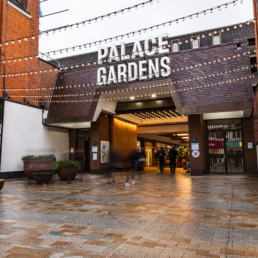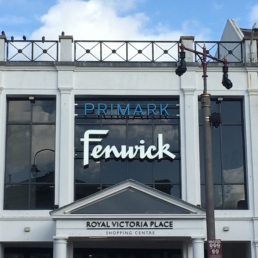Why 'Hybrid Destinations' are the Future of Shopping Centres
As consumer demands change, shopping centres are having to shift their focus – and their future lies in becoming ‘hybrid destinations’, says Mark Harvey of RivingtonHark.
On a trip to Yorkshire, I was slightly surprised to find half the local pub given over to shelves of everyday provisions. Bringing the village shop under the same roof as the beer pumps had not only reduced costs, but increased spending on both ale and groceries, as shoppers stayed for a pint and drinkers picked up lastminute essentials. There were plans to host some basic post office services. Less village pub, more community hub.
The pub’s shift is a very basic version of the perennial challenge facing shopping centre owners: getting the offer right. Landlords have long understood that an asset’s success is dependent on it reflecting the needs and wants of the customer base. Traditionally that meant food and beverage options to attract people and extend dwell time; latterly leisure options have come to the fore, such as we have undertaken during the transformation of Norwich’s Castle Quarter into a social, leisure and lifestyle destination.
Central to each transformation is that it has been driven by consumer need. Town centre shopping malls as we know them have been an asset class since the 1950s, and for nearly all that time it was retail that was the main attraction; the shift for many of these places has been swift but undeniable. If these assets and locations are to remain relevant in an age when people don’t ‘need’ to come to shopping centres if all they want to do is buy things – they can do that online – there must be other drivers for their visit. That means identifying the activities that customers ‘want’, such as leisure, or can only do in person, like healthcare.
Hybrid destinations
So, if the pre-eminence of retailers has waned, what is it that consumers now need? What can these centres provide to attract the footfall needed to remain viable?
There is no one-size-fits-all answer. For the major regional schemes – the likes of Bluewater and the Trafford Centre – the model remains similar to what has gone before. Leisure and dining are increasingly important here, but ultimately the largest stores and the biggest brands continue to attract shoppers. But for town and city centre sites, there are as many answers as there are locations. It really does depend on what the community needs.
That could mean artisan and street food style dining options. Competitive leisure – attracting a different audience and extending trading hours – will be the way to go for some. Ancillary services such as Amazon lockers and in-person-only stores (think opticians and dry cleaners) can play a vital role. Click-and-collect continues to grow in significance, as retailers look to make optimise their physical space within their businesses, bringing with it a halo effect of customers buying other things while in-store. Flexible workspace is a possibility. Health and wellbeing – NHS centres, dentists – are increasingly important. As are social infrastructure uses such as job centres and public-facing council services. In some cases Council office relocations into shopping centres could work.
What we are seeing is the redundancy of the traditional shopping centre and its transformation into a hybrid destination, attracting a huge range of visitors with different requirements and reasons to drop by. In one visit, they can pick up a new outfit, return an online delivery, take a yoga class, grab something to eat and watch a film, socialise with friends or do some work. The exact mix will be different for each centre, but the aim remains the same: identify what the need is.
Shifting focus
This thinking has certainly underpinned the transformation of Castle Quarter. Having identified a lack of leisure options in Norwich city centre, a scheme that was once almost entirely retail has been repositioned so that it is now a 50/50 split between shops and leisure operators. The pivot has seen Castle Quarter become Norwich’s leading ‘social, leisure and lifestyle’ destination.
In all, some 90,000 sq ft of space at Castle Quarter has been shifted towards leisure, entertainment and F&B. That means leisure operators such as Escape Hunt, Boom Battle Bar, Putt Putt Noddle, Spy Missions, Vue cinema, Superbowl and PureGym, alongside a new ‘market hall’ style street food and entertainment concept across the entire top floor of the scheme. It is the first such asset to successfully undertaken a repositioning of this scope and scale.
Retail has been far from abandoned and is still a key attraction, with major brands such as Boots, TK Maxx and The Entertainer as long-term occupiers. But the transformation has had a huge effect on visitor profile and overall trading performance, drawing further strength from the clustering effect of having such a range of leisure options under one roof.
Footfall within Castle Quarter is comfortably outperforming the wider city centre. Trading hours have been extended into the evenings, bringing success not only to the leisure operators themselves, but also creating opportunities for improved performance among those retailers that are able to capitalise. Dwell time has increased too, as visitors take advantage of everything that is on offer.
We’ve found this mix of leisure, lifestyle and social – complementing the existing retail – has created the ideal destination for central Norwich. Much like the pub in Yorkshire, a diversified offer has not only generated better trading for the individual occupiers, but driven improvements in the overall performance of the asset too.
Welcome to the age of hybrid destinations.
Latest News
December 19, 2025
Primark Comes to Royal Victoria Place, Tunbridge Wells
December 4, 2025



